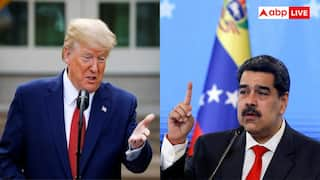Will Modi-Xi Handshake In Bali Turn Into A Hug In Delhi When India Hosts G20 Summit? Answer Is, No

The military standoff that India and China have engaged in for the past three years will not be resolved by September, unlike what the popular discourse will tell you. If anyone is under the impression that the hitherto unconfirmed visit of Chinese President Xi Jinping to New Delhi for the G20 Summit, which will take place on 9-10 September, will put an end to the military standoff in Ladakh, then it is an incorrect inference. With the announcement of the 23rd Summit of the SCO Council of Heads of State going fully virtual, even the last straw of hope of a resolution at the border has now been thrown out of the window. In fact, the announcement itself clearly signals a further worsening of bilateral ties between New Delhi and Beijing.
After being a full member of the Shanghai Cooperation Organisation in 2017, this was India’s opportunity to grab the dragon by the collar by way of adept diplomacy and strategic planning. But instead, India, which is the SCO Chair for 2023, chose to hold the entire summit virtually, already making it a damp squib affair. The move has also watered down all expectations of a possible thaw in the India-China bilateral ties because there were high expectations that during the SCO Summit, Prime Minister Narendra Modi may hold a meeting separately on the sidelines with President Xi Jinping and for that to happen border issue had to be resolved.
If Chinese media reports are to be believed, President Xi had already expressed his displeasure over India’s decision to postpone the SCO Summit from June-end to July, which had to be done due to Prime Minister Modi’s state visit to the US. However, with the Defence and Foreign Ministers’ tracks of the SCO taking place in person, the speculations were flying thick and high that the SCO Summit too will see the Chinese leader landing in India while the situation at the border calms down. But that is far from what the reality is on the ground.
The reality is both sides have increased their deployment of soldiers as well as artillery at the border areas, which witnessed the killing of 20 Indian soldiers at the Galwan River Valley in June 2020 near the Line of Actual Control, or LAC, the de facto boundary between India and China in Ladakh. Among the 20 soldiers, there was a commanding officer of the rank of colonel. This was the first deadly clash at LAC that led to bloodshed and death since 1975.
Post the Galwan clash, Yun Sun, a Washington-based Chinese scholar, who is Senior Fellow and Co-Director of the East Asia Program and Director of the China Program at the Stimson Center, had written that China is in “no hurry to resolve the disputes as it bogs India down as a continental power.”
According to Indian Army sources, there has been no positive movement from the Chinese side in terms of disengagement and de-escalation even as both sides continue to hold innumerable rounds of talks. The latest round of talks took place on 31 May under the framework of the Working Mechanism for Consultation and Coordination (WMCC) in which both sides decided to hold military-level talks soon.
India’s Remains Firm On Status Quo; China Yet To Send Envoy
Following the clash, it seemed as if both sides would settle the dispute by revisiting the terms of the border protocols and agreements when External Affairs Minister S. Jaishankar went to Moscow in September 2020 and met his then-Chinese counterpart, Wang Yi. Both sides reached an understanding that both sides will “abide by all the existing agreements and protocol on China-India boundary affairs, maintain peace and tranquillity in the border areas and avoid any action that could escalate matters” even as both released a five-point agenda on the easing of tensions in the border areas.
During all its diplomatic as well as military level talks with China, India has maintained that it wants the patrolling rights back in Depsang and Demchok, basically a restoration of the status quo ante, as it was before April-May 2020.
Recently, another Chinese scholar, Hu Shisheng, Director at South Asia Institute of the China Institutes of Contemporary International Relations (CICIR) – a Beijing-based think-tank, wrote, “In China's view, the Galwan Valley incident is the inevitable result of India's long-term violation of the 1993, 1996, and even 2005 and 2013 agreements.”
Hu said, “If we want to talk about recovery, we must first highlight India’s continuous erosion of the ‘Line of Actual Control on November 7, 1959, that China challenged as early as 1959 in the past 60 years. If the Indian side insists on talking about the so-called restoration of the status quo, then we must make it clear to India when the status quo referred to here is appropriate, and it cannot be based solely on the Indian side’s timeline. Our military’s series of operations in 2020 have actually effectively curbed India’s border encroachment for more than half a century.”
CICIR is yet another mouthpiece of the Chinese government. Hence, articles produced by the think-tank are a reflection of the mindset of the Chinese leadership.
These comments from Hu right after the meeting between Defence Minister Rajnath Singh and Chinese Defence Minister and State Councillor Li Shangfu on 27 April during the SCO Defence Ministers meeting.
During the meeting, Singh told Li that China’s move to violate the existing agreements has “eroded the entire basis of bilateral relations and disengagement at the border will logically be followed with de-escalation.”
Jaishankar and the new Chinese Foreign Minister Qin Gang, who took over the post in December 2022, held two bilateral meetings on 2 March as well as on 4 May this year on the margins of the G20 Foreign Ministers meeting and SCO Foreign Ministers conference, respectively.
However, no resolution can be seen reached in both meetings. In fact, the contrary seemed to have happened if the External Affairs Minister's statements are anything to go by. He said in Goa, “We have to take the disengagement process forward … India-China relations are not normal and cannot be normal if peace and tranquillity in the border areas are disturbed.”
China, on the other hand, has not yet appointed an Ambassador to India after its last envoy Sun Weidong left India in October 2022. It was under him that the border standoff began. No wonder then why immediately after his departure from India he was promoted to the level of Vice Minister.
“Dragon-Elephant Tango is the only correct choice for the two sides … Through joint efforts of both sides, we can bring China-India relations back on the right track and promote the sound and steady development of the bilateral relations, so as to deliver benefits to the two countries and the two peoples,” Sun said in his departure statement.
With no positive developments taking place between India and China, the handshake between PM Modi and President Xi in Bali, Indonesia last year during the G20 Summit is unlikely to turn into a hug when India hosts the next summit three months from now.
[Disclaimer: The opinions, beliefs, and views expressed by the various authors and forum participants on this website are personal and do not reflect the opinions, beliefs, and views of ABP News Network Pvt Ltd.]


























